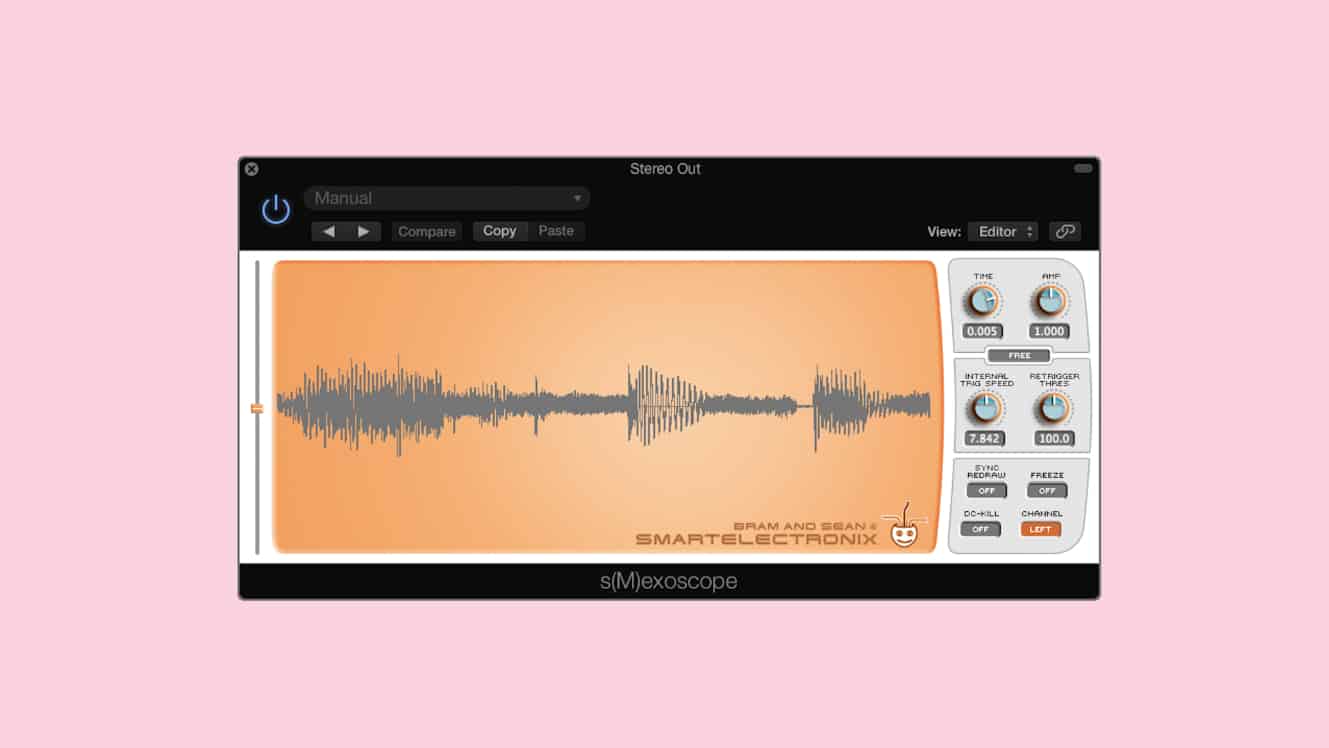
- #Smexoscope mixing how to
- #Smexoscope mixing software
- #Smexoscope mixing professional
- #Smexoscope mixing free
*** Pro-tip: I use a preset channel mixer strip with Smexoscope, Span, Free-G, and not-even-close-to-free SSL EQ on my master bus. I still feel like it’s probably too loud even then, because it’s wearing the sub on my home system out…some say that’s a desired effect! In the rework of Tsubaki, I’ve reduced the bass probably 18 times in the mix and its reading -16db max. I have a mix where the bass fits nice in the mix and its reading -12db max. (Hence reworking the entire album from scratch). I’ve found no magic setting for any instrument in recent times. I try to mix better instead of making a mastering engi do more work.

3db is a lot of extra limiting that will just crush things into a square waveform. Some do say -6db for mixdown, but I’m making loud Techno. As long as everything gels and the mix isn’t going higher than -3db, who cares what the numbers say on channels. I rarely have to look at the individual channel mixer setting, because outside of setting the kick drum at -8db, it’s completely irrelevant. I keep this up and on top for reference at all times. Even in other DAWs, there is only so much feedback available, but this takes care of my mixing needs. I’m a FL Studio user one of the pitfalls of the program is the metering is pretty crude. The makers of Smexoscope also have a similar crafted spectrum tool for free, but I like the ‘traditional’ approach for this tool. Any less and the feedback is too little for mixing low end for me. You can customize a wealth of settings, but the most significant one is turning the block size up to at least 8192. This is the best spectrum tool I’ve come across. Saturation is a ‘big picture’ approach (at least for me)Īgain with the visual feedback. It might not sound like it’s doing too much at first, but remember, seasons often make food taste better as long as they are used in accurate proportions and in moderation. Saturation is one of the last-steps in a mixdown, but slap this thing on layered sounds and it warms the whole thing up.
#Smexoscope mixing software
Essentially it’s the best of both worlds where you have accurate and quick means to record to hard disks with very little compromise and limitations, but you get the output from outboard circuits that no software can really match (yet). I’ve read a lot about stuff recorded during the 90’s when digital was still ‘new and scary’ was actually recorded with digital equipment then brought back through analog devices like these to warm them up. This simulates oldskool reel-to-reel tape units. Map it to a 360 controller and have fun 😉

Automating the X-Y crosshairs is where the magic happens with this. Like any iconic VST FX, it can get stale and predictable fast, but used subtly (or like a two-handed axe across a drum bus) it can make things pretty interesting very quickly. Also combined with a Transient Designer or shaping tools within Battery, you can get a great idea of whats going on a microscopic level. It doesn’t magically make thin bass sound awesome, but its a great step forward when considering levels and compression. This allows you to actually see the attack and/or release of your kick drum and bass, so you can match them evenly with a lot less effort.
#Smexoscope mixing how to
Waveforms do not lie as long as you understand how to read and use the feedback. Ears > feedback always, but Smexoscope is a readout of the actual waveform output in absolute real-time. Some stuff can show up very very high (sharp leads, crashes, snare rolls,etc) on the spectrum but it’s barely reading -20db on the fader and its fitting in the mix just fine. This tool is more valuable to me over a spectrum analyzer, because often spectrum analyzers flat out lie and it’s not an accurate indication of truly how much sound is in the given spectrum. Music is still part science like it or not.
#Smexoscope mixing professional
Until then realistically not too many people have an amazingly perfect air-tight mixing space so we often look for visual feedback tools like this to aid things. I know people say “blah blah use your ears’, but again unless you are mixing in a professional studio you might not be able to hear absolutely everything as it’s happening. My next investment is foam diamonds, bass traps and removal of a wall. A subwoofer in this room is going to be problematic since the shape and position is just really awkward. Recently I was having issues with matching kicks and bass in volume because my ears were not really used to my new monitor setup. I read about this plugin a lot on producer forums as “OMG USEFUL” and I never thought too much of it to be honest.

Here’s some things that are a must in my mixes.
#Smexoscope mixing free
I have some higher priced toys and software, but I’ve found in the past few months that a few free tools have the made the ultimate best use out of these weapons of Techno destruction.


 0 kommentar(er)
0 kommentar(er)
